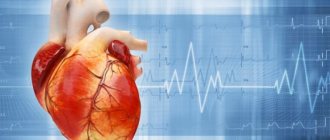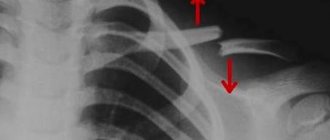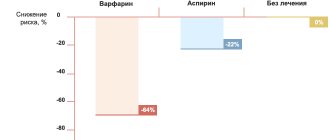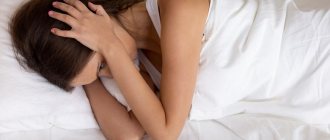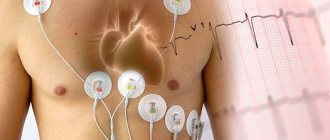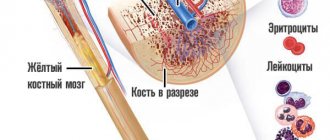Causes of vegetative-vascular dystonia
The main causes of vegetative-vascular dystonia include the following.
- Prolonged stress.
- Mental trauma.
- Physical overexertion.
- Bad habits (smoking, drinking alcohol).
- Negative environmental factors.
- Hereditary predisposition.
- Psycho-emotional overload.
- Sudden and significant changes in environmental conditions.
- Mental fatigue.
- Age-related hormonal changes.
- Severe intoxication.
In addition to the listed reasons that have a direct impact on the appearance of vegetative-vascular dystonia, there are a number of factors that themselves cannot cause VSD, but reveal a predisposition to it. The longer and stronger their exposure, the higher the likelihood of pathology occurring.
Violation of the vegetative functions of the body is promoted by:
- smoking;
- frequent and prolonged work at the computer;
- frequent abuse of alcoholic beverages;
- lack of sleep;
- uncontrolled medication use;
- frequent consumption of very spicy foods.
Why panic attacks need to be treated
The syndrome may not appear too often: the interval between attacks can be quite significant, but sooner or later, the panic will return anyway, that is, nothing will go away on its own.
The consequences of this are:
- Since a panic attack can take you by surprise at any time, in any place, in public, the person suffering from the disorder begins to avoid loved ones, friends, does not go anywhere, and withdraws into himself.
- Various phobias develop - fear of open space, darkness, phenomena, i.e. anything.
- Psycho-emotional disorder leads to personality disorder.
- Self-doubt develops, which affects personality, appearance, family relationships, and professional activities.
- Sleep is disturbed, appetite is lost, and the body becomes dehydrated. As a result, the body suffers.
- Refusal to share problems causes problems in the nervous system.
It is imperative to get rid of this problem, since, judging by the above, it brings problems in social adaptation, worsens the quality of life, interferes with normal work, and negatively affects the physical and mental state.
Treatment of vegetative-vascular dystonia
If treatment is started in a timely manner, the result in most cases will be positive. However, it may take several months. The duration of therapy directly depends on the form of vegetative-vascular dystonia and varies between 4–10 months. It is impossible to prescribe a universal remedy for VSD that will definitely help overcome the pathology.
The main role in the fight against vegetative-vascular dystonia is played by a healthy lifestyle, feasible physical activity and lack of stress. In addition, to achieve results, you need to give up smoking and drinking alcohol, normalize your work and rest schedule, adhere to proper nutrition, diversifying your diet with vegetables, fruits, nuts and dairy products.
What is prescribed for VSD? Treatment of vegetative-vascular dystonia is a whole range of measures, which may include the following:
- diet;
- taking medications;
- physical therapy;
- breathing exercises;
- acupuncture;
- massage;
- balneotherapy;
- phototherapy;
- psychotherapy;
- physiotherapeutic procedures (massage, breathing exercises, etc.).
There are a lot of drugs prescribed for VSD. Their choice depends on the symptoms of the pathology, the person’s health status, age and other factors. Therefore, only a doctor can tell you what to take for VSD. For each patient, the doctor develops an individual treatment regimen (based on the clinical picture), which may include the following groups of drugs:
- soothing herbal remedies;
- antidepressants;
- tranquilizers and anxiolytics;
- nootropics;
- vascular drugs;
- psychotropic drugs;
- adaptogens, etc.
What is depression really?
This is a long-term (2 weeks or more) pronounced decrease in mood, which is accompanied by several additional symptoms: decreased activity, slower mental activity, lack of joy in life. That is, if you are no longer touched by the usual joys - hobbies, family, get-togethers with friends, then this is a reason to think, monitor your condition and, perhaps, consult a doctor.
If your usual joys no longer touch you, then this is a reason to think about it and, perhaps, consult a doctor.
True depression is a serious and often severe illness that requires mandatory treatment by a psychiatrist with the prescription of special medications.
Drug elimination of symptoms of vegetative-vascular dystonia
Symptomatic treatment is aimed at eliminating the manifestations of vegetative-vascular dystonia.
- For rapid heartbeat and periodic surges in blood pressure, beta-blockers are indicated.
- For VSD and panic attacks, taking tranquilizers is indicated.
- Heart pain can be relieved with sedatives. For bradycardia (heart rate less than 50 beats per minute), it is recommended to take a drug that stimulates heart contractions.
- Vasodilators are also necessary for VSD. ACE inhibitors have this effect.
- If pain (in the abdomen, joints, muscles, heart) due to VSD cannot be relieved, doctors may prescribe tricyclic or serotonergic antidepressants. Typically, a short course of taking these drugs quickly relieves pain.
- With the hypertensive type of vegetative-vascular dystonia, agents for the blood vessels of the brain are needed that improve blood circulation. These drugs will relieve dizziness due to VSD caused by high blood pressure.
- If constipation appears against the background of VSD, then you should not only adjust your diet, where fiber-rich foods will predominate, but also, if necessary, take laxatives recommended by your doctor.
- If the patient has a tendency to diarrhea, he, on the contrary, needs to limit the consumption of foods containing fiber and take fixatives as necessary. Also in this case, sorbents can be used.
- To eliminate signs of venous insufficiency, venotonic drugs may be prescribed. In addition, such tablets help with headaches due to VSD and eliminate tinnitus.
- For headaches due to low blood pressure, it is recommended to take tonics.
Thus, along with the treatment of the underlying pathology, a fairly wide range of tablets for VSD are used to eliminate the unpleasant symptoms of vegetative-vascular dystonia.
What examinations are needed for excessive sweating and how to deal with it
Murzaeva Irina Yurievna
Endocrinologist, Preventive Medicine Doctor
July 10, 2014
The long-awaited summer and warmth has arrived. There was a need to raise this topic. Excessive sweating (or hyperhidrosis) comes in varying degrees of severity. This is a problem that causes discomfort to a huge number of people every day, limiting their usual life and wardrobe choices.
A little classification:
- there is sweating in certain areas of the body, local hyperhidrosis: only the palms, or only the feet, or only the armpits, or other areas of the body (areas under the breasts, inguinal folds, scalp, face);
- there is sweating widespread throughout the body, diffuse hyperhidrosis.
In any case, before starting treatment, it is worth finding out the possible causes of sweating.
More often there are 2 forms of local hyperhidrosis: palmar-plantar, axillary, in these 2 cases, as a rule, there is no need to look for the cause, such sweating is constitutionally caused: it is either a lot of sweat glands in these areas of the body, or they respond much more actively to stimulation by stress and etc., or there is double autonomic innervation (activity associated with the supply of nerves to the organ) of the sweat glands.
But increased sweating in other areas may depend on specific reasons:
sweating of the head - as a manifestation of VSD (vegetative-vascular dystonia), menopause, arterial hypertension;
sweating of skin folds – fungal infection, carbohydrate metabolism disorders, obesity, etc.;
sweating of the face - as a condition after infectious damage to the salivary glands, damage to the facial nerve, etc.
There may be areas of hyperhidrosis around psoriatic plaques, areas of vitiligo (skin pigmentation disorders).
There may be even more reasons for widespread hyperhidrosis; they are divided into groups.
- Endocrine: DTG (diffuse toxic goiter), diabetes mellitus, pheochromocytoma, hypoglycemia, acromegaly, carcinoid syndrome.
- Infectious (acute and chronic): tonsillitis, tuberculosis, malaria and many others.
- Neurological: parkinsonism, condition after a stroke, diencephalic syndrome, VSD (or NCD), just stress (psychogenic hyperhidrosis), anxiety disorder, etc.
- Oncological: lymphomas, erythremia, etc.
- Genetic syndromes: cystic fibrosis, etc.
- Prem medications: Aspirin, insulin, Promedol, some painkillers, etc.
Tremors, agitation, and excessive sweating may be characteristic symptoms of acute alcohol and opiate withdrawal reactions.
Naturally, all these pathologies have additional symptoms, which only a doctor can deal with by prescribing the appropriate examination, including hormonal examination.
Now the main question is how to deal with this?
When clarifying a specific pathology, for example, diabetes mellitus, thyroid disease, etc. - treatment of the underlying disease. In the absence of causes of hyperhidrosis (constitutional, idiopathic), the following can be used as auxiliary local therapy:
- if we are talking about common hyperhidrosis, this is hardening (take a contrast shower twice a day, 30 seconds with cold and 30 seconds with hot water. Shower for 15 minutes, after waking up in the morning and evening), use of a cryosauna, IRT (acupuncture), sunny - air baths.
- if it is local hyperhidrosis, there are also several methods of treatment. You can solve the problem radically (especially if hyperhidrosis interferes with professional activities) - with the help of injections of Dysport, Botox in the palms, feet or axillary areas. There are attempts to treat hyperhidrosis with other surgical methods - surgical curettage ("husking") of the sweat glands, liposuction of the armpits, endoscopic sympathectomy - removal of nerve fibers approaching the sweat glands (more often with sweaty palms).
A new treatment method has emerged - removal of sweat glands using a neodymium laser.
Locally, you can use antiperspirant-type products (blocking sweat glands), the most effective of which are: for feet - Dry-Dry foot antiperspirant, Oriflaim antiperspirant spray "Active Care", for palms - Dry-Dry, Odaban hand lotion, for the axillary areas - MAXIM, Dry-Dry, Odaban, Lavilin from HLAVIN (used once every 3-5 days), BIOTHERM deo pure, Clinic Dry Form (every other day), Rexona “Long-term protection”, Clarins (daily). Among deodorants that eliminate only odor: LUSH TEO, Weleda (citrus deodorant), etc.
Antiperspirants do not need to be used daily!, unlike deodorants. This is not very favorable, especially if you are prone to swelling; blocking the sweat glands can increase this swelling!
You can also resort to traditional methods of treatment, but this is for ardent opponents of “chemistry” 8):
For hyperhidrosis of the palms: hot hand baths with salt water. For a liter of water, take 3 tablespoons of salt - table or sea. Place your hands in the water and hold until it cools down. Remove and pat dry with a napkin without rinsing. Do baths twice a day
For foot hyperhidrosis. Baths with potassium permanganate (the water should be pink) give good results. If the sweating of the feet is moderate, you can wipe the feet (the skin of the feet and the spaces between the toes) after washing with a solution of salicylic or boric alcohol, and then treat with a mixture of powder and boric acid (1:20).
Teymurov's pasta. Before using the paste, wash your feet thoroughly with soap and water and dry thoroughly. The paste is rubbed into the skin of the feet for 1-3 minutes. The course of treatment with Teymurov paste usually lasts 3-4 days, a second course of treatment can be carried out after a week.
The champion in popularity among folk remedies for treating hyperhidrosis is considered to be oak bark tincture . To prepare the tincture, you need to pour one spoon of oak bark with boiled water, one liter is enough. You can additionally boil the resulting mixture for 5 minutes and leave it to brew for half an hour. Then we lower our arms or legs there. It is worth carrying out at least 10 such procedures, once a day. Oak bark baths can also be made with milk; you only need one glass. The mixture will need to be kept on low heat for about half an hour after it boils. You can prepare a bath: pour 0.5 kg of oak bark into 4 liters of water and boil for 30 minutes, strain and add the decoction to the bath water.
Folk remedies for hyperhidrosis should be used with the same caution as medications. It is important that folk wisdom be used wisely, so involve a specialist in resolving this issue.
In order to strengthen the nervous system in case of excessive sweating, sedatives are used: infusion or tincture of valerian, belladonna preparations - Bellataminal, infusion or tincture of motherwort. Water infusions are taken 1 tablespoon 3 times a day for 2-3 weeks.
The Drionik physiotherapeutic device gives good results.
In addition, it is necessary to exclude spicy, salty and spicy foods from the diet. They promote profuse sweating; alcohol and coffee also increase sweating.
You should not wear synthetic clothes if you sweat excessively; they do not allow air to pass through and promote even more sweat. In addition, synthetic clothing retains the pungent odor of sweat for a long time.
B vitamins, calcium, iron, vitamin D are often added to treatment - their lack can also cause sweating, especially vitamin D deficiency.
I hope my advice will be useful to you. Good luck!
Eltacin® in the treatment of VSD
Therapy for VSD should be aimed at eliminating its cause, and not masking the symptoms. This is precisely why Eltacin® was developed. It contains 3 amino acids: cystine, glycine and glutamic acid. Their combination promotes the production of glutathione in the body - one of the powerful and natural antioxidants in the body, which neutralizes the effects of free radicals, prolongs the life of cells and prevents their death, normalizes the supply of oxygen to tissues and individual cells and helps enzymes maintain their functions. Thanks to this, the drug allows you to eliminate the symptoms of VSD, as well as influence the root of the problem and restore the balance between organs and systems, disturbed by the negative effects of free radicals.
Eltacin®:
- is the strongest endogenous antioxidant;
- sold at an affordable price.
- dispensed without a doctor's prescription;
What to do in case of a sudden attack
If you feel the onset of a panic attack, you can prevent it using the following recommendations:
- in the first seconds, the gas balance provoked by hyperventilation should be normalized. To do this, you need to breathe into cupped palms or a paper bag;
- you need to close your eyes, relax, think about something good. It doesn’t hurt to lie down and at least take a nap;
- switch to the process that was affected by the crisis and continue to carry it out. On the street, you can start counting people passing by, solving arithmetic problems in your head, etc.;
- start singing your favorite song loudly – cheerful, energetic. The most suitable option is a children's room;
- surging heat and clouded consciousness can be cooled and cleared in the shower or by washing the face and skin behind the ears with cold water. Next, you need to look at yourself in the mirror and try to catch the moment the attack recedes;
- drink a cup of hot tea with honey and lemon balm - this soothing drink will calm you down and make you fall asleep;
- Massage your ears or palms - press the membrane between your thumb and index finger and hold it there for a count of five. Do this until the fear passes;
- chew chewing gum, which you should always have with you. The brain will switch, the numbness and excitement will go away. At this moment, you should start doing some distracting but pleasant things;
- Having auto-training skills, you can repeat to yourself - nothing bad happened, there is no danger, everything will pass very quickly.
Recommendation for those who are close to a person who is in crisis: do not be nervous, but take him by the hands and in a very calm voice convince him that everything is fine and will end well.
